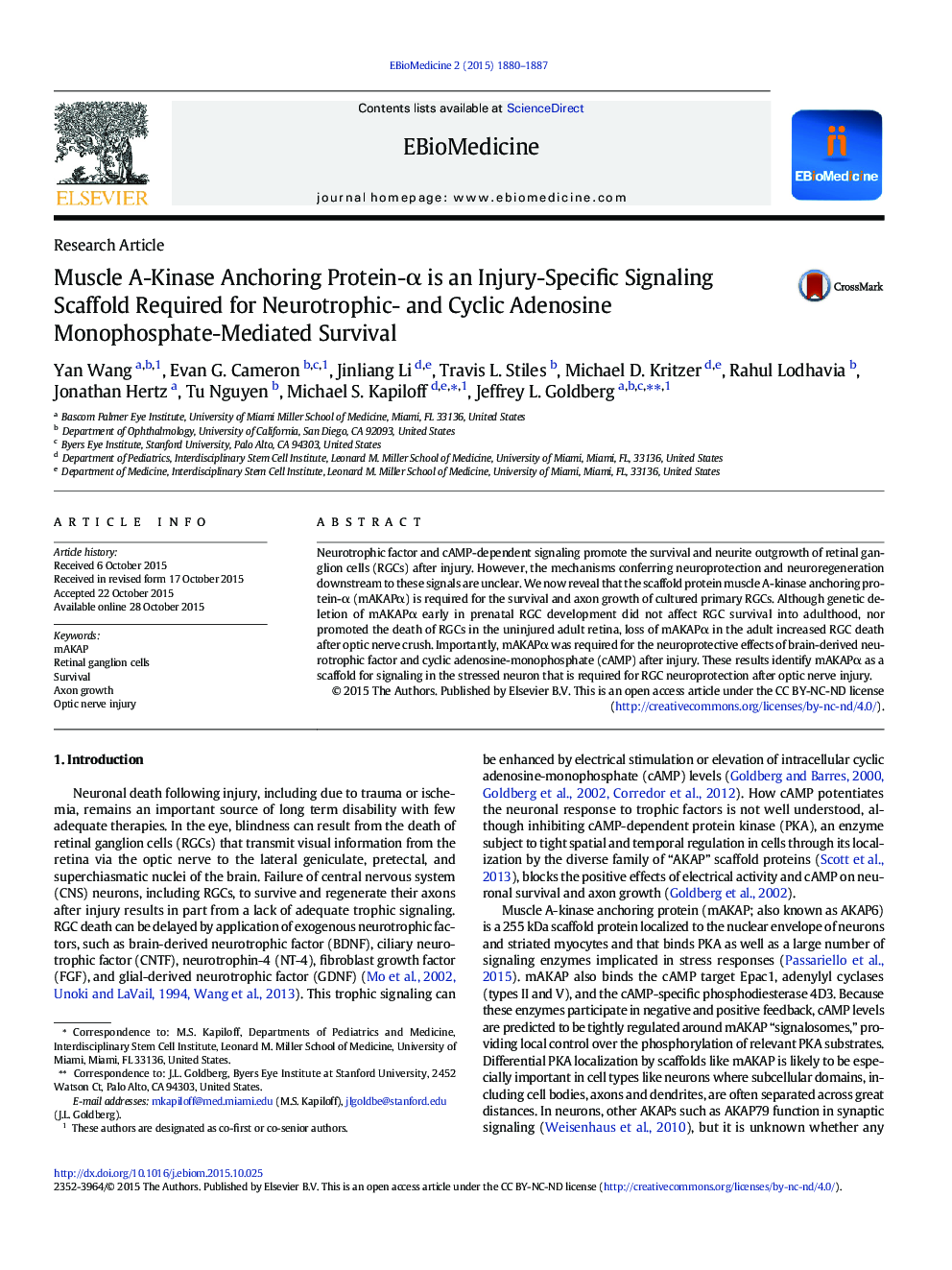| Article ID | Journal | Published Year | Pages | File Type |
|---|---|---|---|---|
| 2121067 | EBioMedicine | 2015 | 8 Pages |
•mAKAPα is a stress-specific mediator of RGC survival.•mAKAP deletion does not affect RGC survival in development or in the uninjured adult retina.•mAKAP is downregulated after optic nerve injury, and its further deletion exacerbates RGC death.•mAKAP deletion suppresses the neuroprotective effects of cAMP and BDNF after injury.After injury or in degenerative diseases, neurons of the central nervous system (CNS) fail to regenerate and often die partly due to a lack of pro-survival, trophic signaling. Better understanding of such signaling is important for the development of therapies that enhance survival and regeneration of neurons after injury. Here we identify a critical regulator of such signaling, mAKAPα, a scaffold protein that coordinates pro-survival signaling to enhance survival and regeneration in CNS neurons after injury. The neuroprotective role of mAKAPα will likely lead to further future insights into the detailed nature of survival signaling in adult neurons.
Neurotrophic factor and cAMP-dependent signaling promote the survival and neurite outgrowth of retinal ganglion cells (RGCs) after injury. However, the mechanisms conferring neuroprotection and neuroregeneration downstream to these signals are unclear. We now reveal that the scaffold protein muscle A-kinase anchoring protein-α (mAKAPα) is required for the survival and axon growth of cultured primary RGCs. Although genetic deletion of mAKAPα early in prenatal RGC development did not affect RGC survival into adulthood, nor promoted the death of RGCs in the uninjured adult retina, loss of mAKAPα in the adult increased RGC death after optic nerve crush. Importantly, mAKAPα was required for the neuroprotective effects of brain-derived neurotrophic factor and cyclic adenosine-monophosphate (cAMP) after injury. These results identify mAKAPα as a scaffold for signaling in the stressed neuron that is required for RGC neuroprotection after optic nerve injury.
Graphical abstractFigure optionsDownload full-size imageDownload as PowerPoint slide
